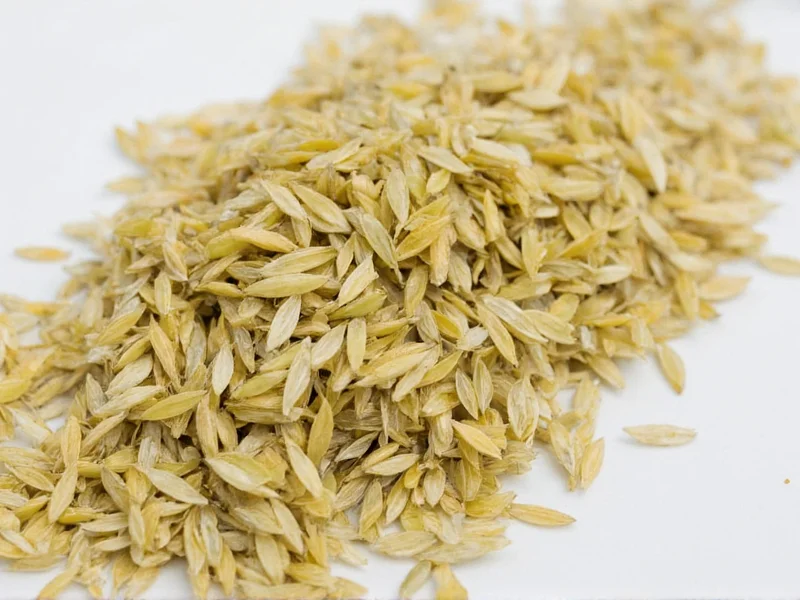Dried lemongrass offers a convenient, shelf-stable alternative to fresh stalks while delivering that distinctive citrusy aroma essential in Southeast Asian cuisine. When you're wondering how to use dried lemongrass properly, understanding preparation techniques makes all the difference between a subtle background note and a pronounced flavor profile.
Why Choose Dried Lemongrass Over Fresh
Dried lemongrass maintains its essential oils remarkably well when properly stored, making it an excellent pantry staple. Unlike fresh stalks that spoil within weeks, dried versions retain potency for 12-18 months. This preservation method concentrates certain flavor compounds, creating a more intense citrus aroma that works particularly well in slow-cooked dishes where extended simmering would diminish fresh lemongrass's volatile oils.
Proper Preparation Techniques for Dried Lemongrass
The key to unlocking dried lemongrass's full potential lies in proper rehydration and processing. Unlike fresh stalks that require bruising, dried versions need different handling:
| Preparation Method | Best For | Processing Time |
|---|---|---|
| Whole stalk steeping | Teas, broths, infusions | 15-20 minutes |
| Crushed pieces | Curries, soups, stews | Simmer 30+ minutes |
| Fine powder | Dry rubs, spice blends | Instant incorporation |
| Paste with oil | Marinades, sauces | 5-10 minutes grinding |
Dried to Fresh Lemongrass Conversion Guide
Understanding dried lemongrass measurements prevents overpowering your dishes. The dehydration process concentrates flavor while removing moisture, requiring adjustment in ratios:
- 1 whole dried stalk (about 3 inches) = 1 fresh stalk
- 1 teaspoon crushed dried lemongrass = 1 tablespoon fresh, minced
- ½ teaspoon lemongrass powder = 1 tablespoon fresh paste
When substituting dried for fresh in recipes like Thai tom yum soup or Vietnamese pho, start with half the recommended amount, then adjust to taste after 15 minutes of simmering. Dried lemongrass releases flavor more slowly but ultimately delivers a more persistent aroma.
Top Culinary Applications for Dried Lemongrass
Chefs specializing in Southeast Asian cuisine rely on dried lemongrass for specific applications where fresh would be impractical:
Infusions and Beverages
For lemongrass tea, place 2-3 whole dried stalks in a teapot with 8 ounces of near-boiling water. Steep for 15 minutes before removing stalks. The dried version produces a cleaner, less grassy infusion than fresh. Add dried lemongrass to simple syrup for cocktails requiring citrus notes without acidity.
Curry Pastes and Spice Blends
Grind dried lemongrass with coriander seeds and galangal to create shelf-stable curry bases. The dry texture incorporates more evenly into spice rubs for meats. For authentic Thai red curry paste, use 1 teaspoon dried lemongrass powder per cup of other dried ingredients.
Slow-Cooked Dishes
Add crushed dried lemongrass to the broth of slow-cooked dishes like Vietnamese beef stew (bo kho) during the last 30 minutes of cooking. The extended heat exposure gradually releases essential oils without becoming bitter. Remove larger pieces before serving to avoid woody texture.
Storage Methods That Preserve Flavor
Maximize your dried lemongrass shelf life with these professional storage techniques:
- Store in airtight glass containers away from light and heat
- Include a silica gel packet to absorb moisture
- Freeze in vacuum-sealed bags for long-term storage (up to 2 years)
- Grind only what you need—whole stalks retain flavor longer than powder
Check potency by rubbing a small piece between your fingers. Strong citrus aroma indicates freshness, while musty or absent scent means it's time for replacement. Properly stored dried lemongrass maintains 80% of its essential oils for 12 months.
Common Mistakes to Avoid
Even experienced cooks make these errors when learning how to use dried lemongrass effectively:
- Overprocessing: Grinding dried lemongrass too finely creates bitter, woody particles that won't dissolve
- Early addition: Adding dried lemongrass at the beginning of cooking makes flavors harsh rather than aromatic
- Incorrect ratios: Using equal measurements of dried versus fresh overwhelms dishes
- Skipping removal: Forgetting to strain out pieces before serving creates unpleasant texture
When preparing Thai coconut soup (tom kha), add crushed dried lemongrass during the simmering phase, not when sautéing aromatics. This timing prevents the delicate citrus notes from burning while allowing sufficient time for flavor extraction.
Specialized Uses Beyond Cooking
Dried lemongrass serves purposes beyond the kitchen. Create natural insect repellent by simmering ¼ cup crushed dried lemongrass in 2 cups water for 20 minutes, then strain and spray. For aromatherapy, place whole stalks in sachets with dried lavender. The essential oils in dried lemongrass maintain their therapeutic properties for stress relief and mental clarity.











 浙公网安备
33010002000092号
浙公网安备
33010002000092号 浙B2-20120091-4
浙B2-20120091-4